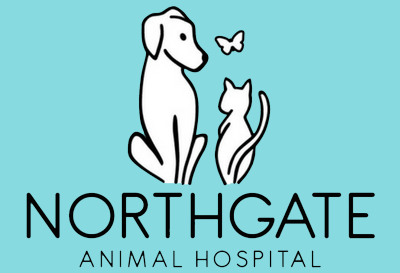As Halloween night approaches, keep in mind that some human treats can be very dangerous for your dog or cat. Help keep your dog and cat safe by being aware of some of the common
Chocolate
During this fall holiday, your furry friends have a tendency to gorge and eat a massive amount of chocolate candy all at once. Keep your candy jar or your kid’s Halloween stash away from food-motivated dogs and cats. When it comes to chocolate, the ingredient methylxanthine (e.g., theobromine, caffeine) can be poisonous to your dog and/or cat. Mild ingestions typically result in agitation, vomiting, diarrhea and excessive panting. Larger amounts can result in heart-toxicity: abnormal heart arrhythmias (abnormal rhythm), an elevated heart rate, and a very high blood pressure. Massive amounts can result in neurologic signs like tremoring, seizure, or death. When it comes to chocolate, keep in mind that the darker and more bitter the chocolate (e.g., Baker’s chocolate, dark chocolate), the more poisonous it is to your furry friend.
Sugarless Sweets
Another danger in your kid’s Halloween stash is sugar-free candy. Xylitol, a natural sugar-free sweetener, can result in a low blood sugar (hypoglycemia) and even liver damage (e.g., acute hepatic necrosis) when ingested by companions. Certain candies, mints, baked goods, and gums can contain large amounts, resulting in xylitol poisoning. Clinical signs of weakness, vomiting, lethargy, collapse, a racing heart rate, and generalized malaise can be seen. When xylitol is ingested in doses > 0.5 g/kg, clinical signs of jaundice (e.g., yellowing of the skin), vomiting, black-tarry stool, anorexia, and liver failure can be seen.
Raisins
Once in a while, you’ll have a neighbor who gives away small boxes of raisins during Halloween. Raisins, grapes, and certain currants (anything in the Vitus spp.) can cause acute kidney injury when accidentally ingested by dogs. Clinical signs may not show up for days, after severe damage to the kidneys has already occurred. Signs such as inappetence, vomiting, belly pain, halitosis (bad breath), excessive or decreased thirst or urination, generalized malaise, and increased kidney values (e.g., creatinine, BUN) may be seen.
Glow Sticks/Jewelry
If you use glow sticks to put on your children’s costume during Halloween, heed caution. While this glowing jewelry may add extra light into your child’s life, it’s hazardous for kitties. Cats seem to love to chew on these toys, and accidentally ingest the chemical within. While it’s not very poisonous, this chemical has a very bitter taste, resulting in profuse drooling, oral pain, inappetence, and vomiting. If you think your cat chewed into one call your veterinarian.
Costumes
Dress-up can be a big mess-up for some companions. Please don’t put your dog or cat in a costume UNLESS you know he or she loves it (yup, a few furry friends are real hams!). For companions who prefer their “birthday suits,” however, wearing a costume may cause undue stress. If you do dress up your companion, make sure the costume isn’t annoying or unsafe. It should not constrict the animal’s movement or hearing, or impede his ability to breathe, bark or meow. Also, be sure to try on costumes before the big night. If your furry friend seems distressed, allergic or shows abnormal behavior, consider letting him go au naturale or donning a festive bandana.
Visitors
Dogs and cats should be kept in a separate room away from the front door during peak trick-or-treating hours. Too many strangers can be scary and stressful for companions. When opening the door for trick-or-treaters, take care that your cat or dog doesn’t dart outside. Always make sure your dog or cat has proper identification. If for any reason your companion escapes and becomes lost, a collar and tags and/or a microchip can be a lifesaver, increasing the chances that he or she will be returned to you
Keep your furry friends safe during this Halloween.
If your dog or cat did get into something poisonous or dangerous, make sure to contact your veterinarian immediately.
If you have any questions or concerns, you should always visit or call your veterinarian – they are your best resource to ensure the health and well-being of your companions.






